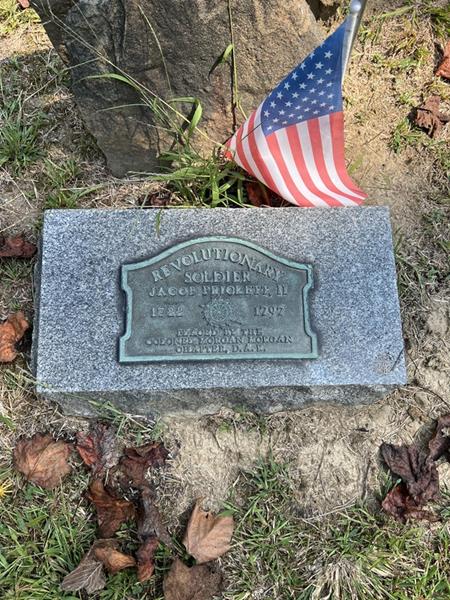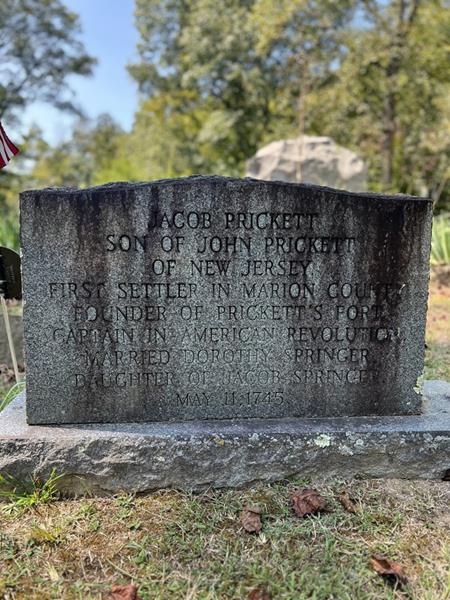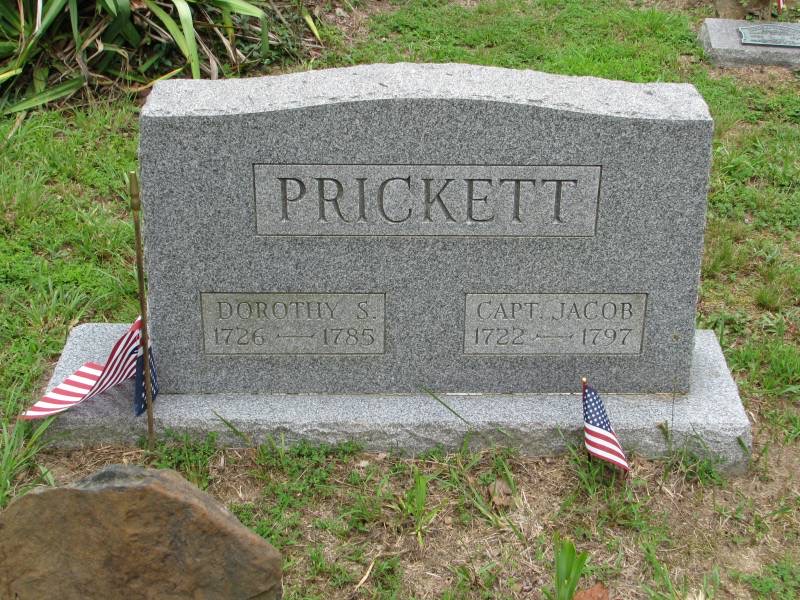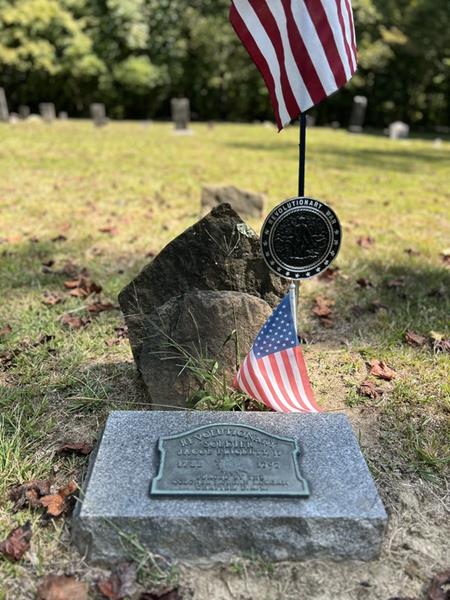Jacob PRICKETT Sr
SAR Patriot #:
P-273784
The following information was assembled from numerous sources and cannot be used directly as proof of Qualifying Service or Lineage.
It is considered a research aid and is intended to assist in locating sources that can be used as proof.
State of Service: VA
Qualifying Service: Captain / Patriotic Service
DAR #: A093133
Birth: abt 1720 / Burlington / NJ
Death: aft 12 Sep 1796 / Mason / KY
Qualifying Service Description:
- Captain, Monongalia County Militia
- Paid for supplies
Additional References:
- 46th-55th Annual Reports DAR. Senate documents (United States Congress, Senate). Government Printing Office: Washington,
- ABERCROMBIE & SLATTEN, VA REV PUB CLAIMS, Volume 2, pg 682
Spouse: Dorothy Springer
Children: Isaac; Mary Drucilla/Drusilla; Martha; Isaiah; Jacob Jr; Josiah; Dorothy; Nancy Ann; John;
Members Who Share This Ancestor
| Date Approved | Society | ACN | SAR Member Info | Lineage via Child | View Application Detail | |
|---|---|---|---|---|---|---|
| 1969-02-07 | TX | Unassigned | John Carl Law (98137) | Jacob | ||
| 1982-03-10 | KS | Unassigned | John Leroy Bunner (119562) | Nancy | ||
| 1983-05-05 | KS | Unassigned | Daniel Edward Dragush (119993) | Nancy | ||
| 1988-11-16 | CA | Unassigned | Liberty William Morgan (115317) | Drusilla | ||
| 1989-10-13 | CA | 221470 | Clarence Curtis Peterson (132262) | Drusilla | ||
| 1992-04-13 | CA | Unassigned | Ronald Roger Cade (138761) | Jacob | ||
| 1993-02-24 | OH | 211364 | Roger Marvin Cade (140254) | Jacob | ||
| 1999-07-26 | WI | 4086 | Stephen Anthony Michaels (152215) | Dorothy | ||
| 2003-03-13 | IA | 15554 | Charles Bernard Prickett (159801) | James | ||
| 2009-07-09 | OH | 35725 | Michael Joseph Hinton (174588) | Nancy | ||
| 2010-12-10 | WA | 41079 | Kenneth Eugene Pease (178356) | Josiah | ||
| 2010-12-16 | AZ | 40527 | Leo Dale Scott (176768) | Drucilla | ||
| 2011-06-17 | WV | 42952 | Charles David McMunn (179927) | Drusilla | ||
| 2011-06-17 | WV | 42953 | David Andrew McMunn (179928) | Drusilla | ||
| 2011-06-17 | WV | 42954 | Timothy Scott McMunn (179929) | Drusilla | ||
| 2011-06-17 | WV | 42955 | Joshua Andrew McMunn (179930) | Drusilla | ||
| 2011-06-17 | WV | 42956 | Adam David McMunn (179931) | Drusilla | ||
| 2011-06-17 | WV | 42957 | Roland Robert Schindler III (179932) | Drusilla | ||
| 2011-06-17 | WV | 42958 | William Thomas Schindler (179933) | Drusilla | ||
| 2013-02-12 | IL | 51900 | Jerry Austin McMunn (186326) | Drusilla | ||
| 2013-11-03 | TX | 55769 | Alan Leonard Johnson (189174) | Jacob | ||
| 2015-01-28 | WV | 62337 | Warder Ansley Shaver (193602) | Josiah | ||
| 2017-08-23 | WA | 76800 | Donald Edward Lucas (204268) | John | ||
| 2021-03-12 | VA | 93574 | James Brock Hess USNR (197681) | Josiah | ||
| 2022-12-31 | VA | 104908 | Robert Henry Krieger (224848) | Dorothy | ||
| 2022-12-31 | VA | 104909 | John Jeffrey Krieger (224849) | Dorothy | ||
| 2022-12-31 | VA | 104910 | Robert Aaron Krieger (224850) | Dorothy | ||
| 2025-02-14 | TX | 115288 | Sam W. Cannon (232687) | |||
| 2025-02-14 | TX | 115289 | Jordan Scott Johnson (232688) | |||
| 2025-02-14 | TX | 115290 | Riley James Cannon (232689) | |||
| 2025-02-14 | TX | 115291 | Toby Charles Cannon (232690) |
Burial:
Location:
/ Marion / WV / USA
Find A Grave Cemetery #:
Marker Type:
Marker, brass; also upright, gray stone, newer
SAR Grave Dedication Date:
Comments:
- Photo submitted by Eric Templeton, #210167, with permission of Dirk Pitt
- 2nd-4th Photos used with permission of Compatriot Mitchell Anderson, 229001, KYSSAR
Directions to Cemetery / Gravesite:
From Pittsburgh International Airport: Get on I-376 E in Findlay Township from Airport Blvd. Take Pricketts Fort Rd to Overfort Ln, on your right



